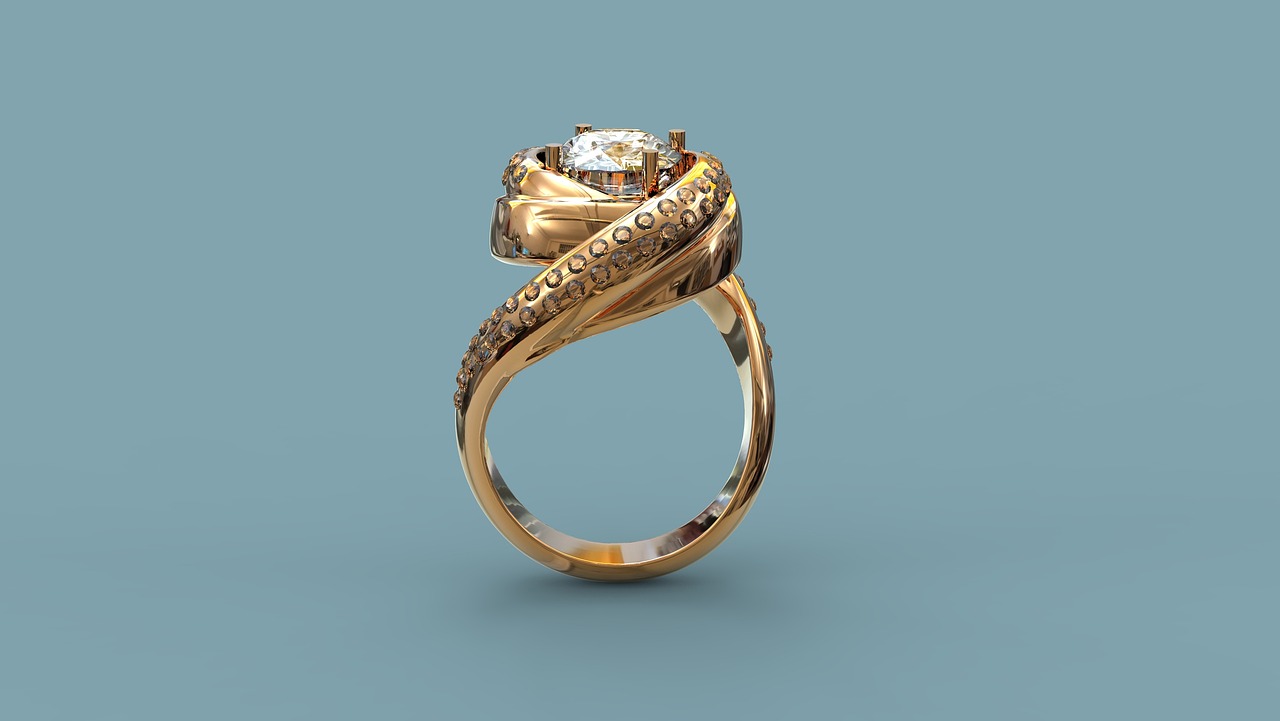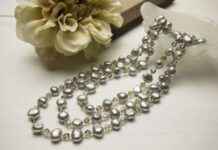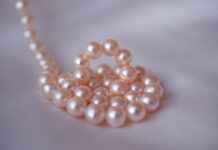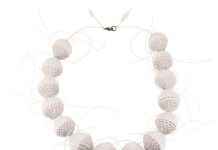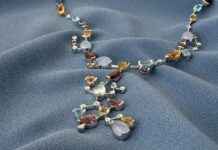This article delves into the captivating journey of jewelry, tracing its origins and cultural significance throughout history. It highlights the transformation of jewelry styles and materials, showcasing how adornment has evolved into an art form.
Ancient Jewelry: A Reflection of Culture
In ancient civilizations, jewelry was not merely decorative; it served as a reflection of social status, religious beliefs, and cultural identity. Each piece told a story, showcasing the artistry and values of the time.
The Materials of Ancient Jewelry
- Gold: Revered for its rarity and luster, gold was often crafted into intricate designs symbolizing power and prestige.
- Silver: Valued for its beauty, silver was frequently used alongside gold to create stunning combinations.
- Gemstones: Cherished not only for their aesthetic appeal but also for their believed metaphysical properties, gemstones played a vital role in ancient jewelry.
The Middle Ages: Jewelry in a Changing World
During the Middle Ages, jewelry styles shifted significantly due to the rise of Christianity and feudalism. This period saw the emergence of new forms and functions in adornment.
Religious Symbolism in Medieval Jewelry
Jewelry often featured Christian symbols, serving both decorative and devotional purposes, reflecting the spiritual beliefs of the time.
The Renaissance: A Revival of Art and Elegance
The Renaissance brought a resurgence of interest in classical art, profoundly influencing jewelry design. Techniques advanced, leading to more elaborate and expressive pieces.
The Industrial Revolution: Mass Production and Accessibility
The Industrial Revolution transformed jewelry production, introducing mass manufacturing and making adornment accessible to a broader audience.
Modern Jewelry: Trends and Sustainability
Today, jewelry reflects a blend of traditional craftsmanship and modern design, with a growing emphasis on sustainability and ethical sourcing of materials.
The Future of Jewelry: Innovations and Predictions
Looking forward, innovations such as 3D printing and smart jewelry are set to redefine the jewelry landscape, shaping how we perceive and wear adornments.
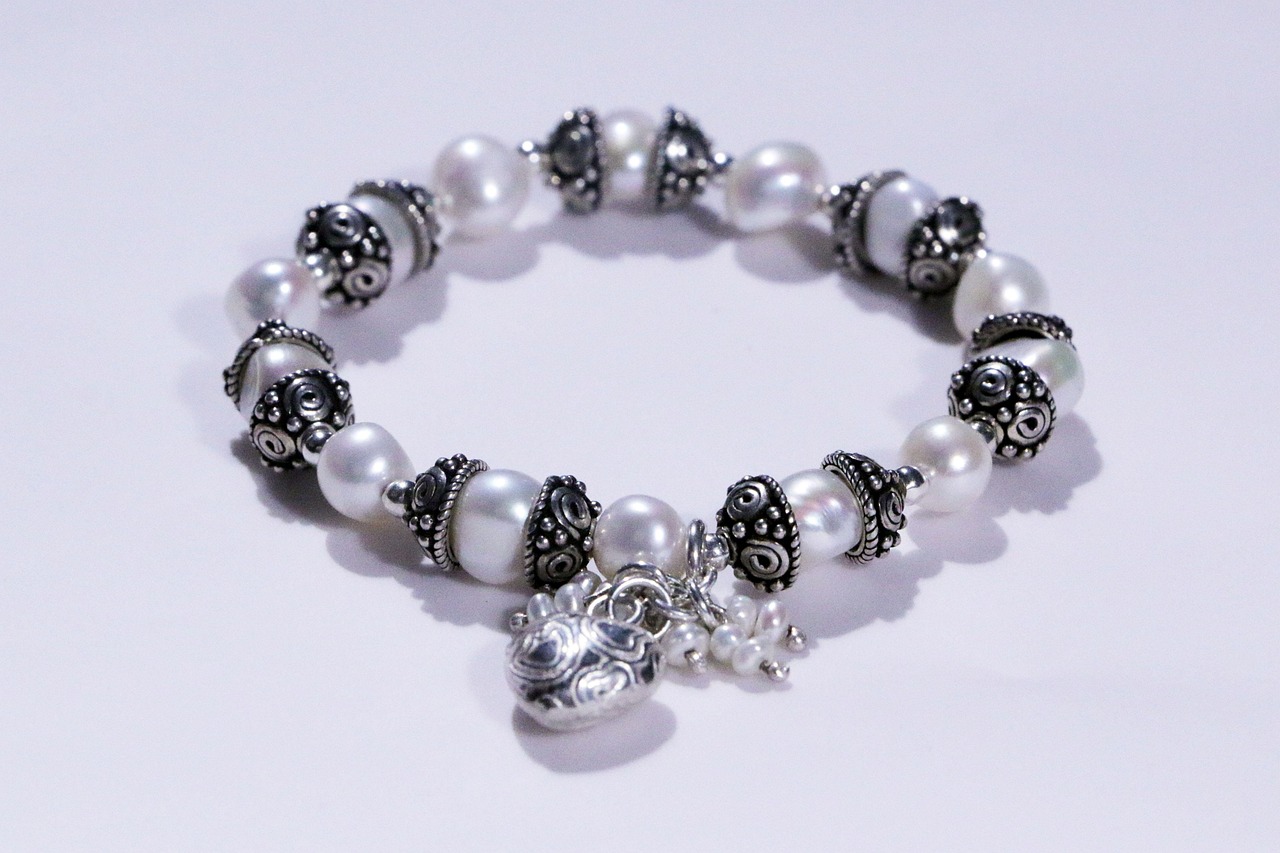
Ancient Jewelry: A Reflection of Culture
Jewelry has always held a significant place in human history, particularly in ancient civilizations. Ancient jewelry was not merely a form of adornment; it served as a profound reflection of social status, religious beliefs, and cultural identity. Each piece of jewelry told a story, encapsulating the values and traditions of the society that crafted it.
In many ancient cultures, jewelry was a symbol of wealth and power. For instance, in Egypt, the pharaohs adorned themselves with intricate gold necklaces and elaborate headdresses, which were not only decorative but also served to signify their divine right to rule. Similarly, in Mesopotamia, the use of lapis lazuli and other precious stones in jewelry indicated high status and was often reserved for the elite.
The artistry involved in creating these pieces was remarkable. Artisans employed various techniques, such as casting, engraving, and beading, to produce intricate designs that showcased their skills. The use of symbols and motifs in jewelry also held significant meaning. For example, the use of the ankh symbol in Egyptian jewelry represented life and immortality, reflecting the culture’s beliefs about the afterlife.
Moreover, jewelry often played a role in religious practices. It was common for ancient peoples to create pieces that were offered to deities or used in rituals. In many cultures, wearing specific jewelry was believed to provide protection or bring good fortune. For example, in ancient Greece, amulets were worn to ward off evil, while in Roman society, intricate brooches were often used to signify allegiance to a particular deity.
In conclusion, ancient jewelry was far more than mere decoration; it was a complex interplay of artistry, culture, and belief. Each piece serves as a tangible link to the past, offering insights into the values and traditions of ancient civilizations.
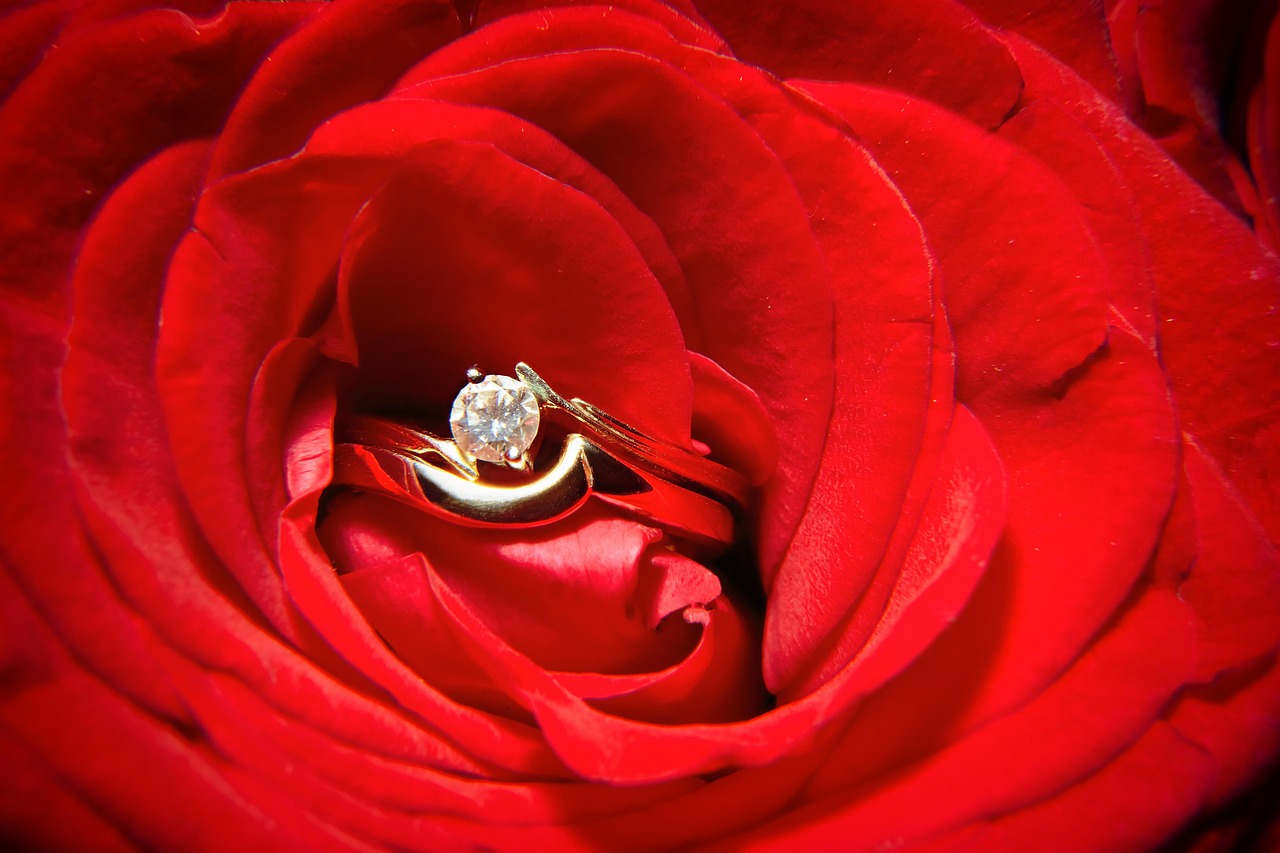
The Materials of Ancient Jewelry
Jewelry has been an integral part of human culture for millennia, serving various purposes from adornment to status symbol. Among the earliest forms of jewelry, gold, silver, and gemstones stand out as the primary materials used by ancient civilizations. These materials were not only chosen for their aesthetic appeal but also for their symbolic significance, reflecting the values and beliefs of the societies that crafted them.
Gold, often regarded as the ultimate symbol of wealth and power, was highly coveted in ancient times. Its luster and rarity made it a favored choice for creating intricate jewelry pieces that adorned the elite. Gold was not merely a decorative element; it also held deep spiritual significance. Many ancient cultures, including the Egyptians and the Mesopotamians, believed that gold was the flesh of their gods, thus using it in religious artifacts and burial items to honor the divine.
Silver, while less expensive than gold, was equally valued in ancient societies. Its bright sheen and malleability made it a popular choice for crafting jewelry that was both beautiful and functional. Silver items often symbolized purity and were used in various rituals and ceremonies, showcasing the cultural beliefs surrounding this precious metal.
In addition to metals, gemstones played a crucial role in ancient jewelry. Each gemstone was believed to possess unique properties and powers. For instance, emeralds were associated with fertility and rebirth, while rubies symbolized passion and protection. The choice of gemstones often reflected the wearer’s personal beliefs and aspirations, making each piece of jewelry not just an accessory, but a meaningful talisman.
Through the careful selection of these materials, ancient jewelry served as a reflection of social status, artistic expression, and cultural identity. The enduring legacy of these practices can still be seen today, as modern jewelry continues to draw inspiration from the rich history of its ancient predecessors.
Gold: The Ultimate Symbol of Wealth
Gold has been cherished throughout history, often regarded as the ultimate symbol of wealth and prosperity. Its intrinsic qualities, such as rarity, luster, and durability, have made it a preferred material for crafting jewelry that not only serves as adornment but also signifies status and power.
In ancient civilizations, gold was more than just a precious metal; it was a representation of divine favor and authority. Rulers and elites adorned themselves with intricate gold pieces, believing that these artifacts would enhance their prestige and affirm their dominance in society. The allure of gold has transcended cultures and eras, maintaining its status as a coveted material.
Throughout history, various cultures have developed unique techniques for working with gold. For instance, the ancient Egyptians mastered the art of goldsmithing, creating stunning jewelry that often featured elaborate designs and inlays. This craftsmanship not only showcased their artistic skills but also reflected their deep-seated beliefs about the afterlife and the divine.
- Symbol of Power: Gold jewelry was often used as a means of displaying wealth and authority among leaders.
- Religious Significance: Many ancient cultures, including the Egyptians and Greeks, believed gold possessed divine properties, leading to its use in religious artifacts.
- Artistic Expression: The intricate designs and techniques used in gold jewelry reveal much about the cultural values and artistic capabilities of the societies that created them.
As societies evolved, so did the use of gold in jewelry. During the Middle Ages, the symbolism of gold shifted, influenced by the rise of Christianity. Jewelry began to incorporate religious motifs, serving both decorative and devotional purposes. This trend continued into the Renaissance, where gold was celebrated for its beauty and versatility, leading to the creation of exquisite pieces that defined the era.
In contemporary times, gold remains a dominant force in the jewelry industry. Its enduring appeal is evident as it continues to be a favored choice for engagement rings, necklaces, and other forms of adornment. Moreover, with the growing emphasis on sustainability, many jewelers are now focusing on ethically sourced gold, ensuring that this timeless material is not only beautiful but also responsibly obtained.
In conclusion, gold’s status as the ultimate symbol of wealth is a testament to its historical significance and cultural value. From ancient artifacts to modern jewelry, gold continues to captivate and inspire, reflecting the evolving relationship between society and this precious metal.
Goldsmithing Techniques in Antiquity
The art of goldsmithing in antiquity is a testament to the incredible skill and creativity of ancient artisans. Among the most remarkable techniques employed were granulation and filigree, both of which allowed for the creation of intricate and stunningly detailed jewelry pieces that still captivate audiences today.
Granulation involves the meticulous process of fusing tiny gold spheres onto a surface, creating a textured and visually striking effect. This technique not only added depth to the jewelry but also showcased the artisan’s ability to manipulate materials at a minute scale. The precision required for granulation speaks volumes about the high level of craftsmanship present in ancient societies, where artisans dedicated years to perfecting their skills.
On the other hand, filigree is characterized by delicate threads of gold that are twisted and shaped into intricate designs. This technique allowed artisans to create intricate patterns and motifs, often resembling lacework. Filigree jewelry was not just about aesthetics; it often carried cultural and symbolic meanings, reflecting the beliefs and values of the societies that produced them.
| Technique | Description | Significance |
|---|---|---|
| Granulation | Fusing tiny gold spheres onto a surface | Showcases precision and skill in craftsmanship |
| Filigree | Delicate threads of gold shaped into intricate designs | Reflects cultural symbolism and artistry |
The legacy of these ancient goldsmithing techniques continues to influence modern jewelry design, reminding us of the rich history and cultural significance embedded in each piece. The stunning craftsmanship of the past not only highlights the aesthetic values of ancient civilizations but also serves as an enduring inspiration for contemporary artisans.
The Role of Gold in Ancient Religions
Throughout history, gold has held a significant place in various ancient religions, serving as a medium for spiritual expression and ritualistic practices. Its intrinsic beauty and scarcity made it a precious material, often associated with the divine. Many ancient cultures, including the Egyptians and Greeks, believed that gold possessed supernatural qualities that could bridge the gap between the mortal and the divine.
In ancient Egypt, gold was considered the flesh of the gods, particularly associated with the sun god Ra. Temples were adorned with golden artifacts, and pharaohs were buried with gold items to ensure safe passage to the afterlife. These artifacts included jewelry, masks, and statues, all crafted with meticulous attention to detail, reflecting the belief that these items would protect and empower the deceased in the next world.
Similarly, in ancient Greece, gold played a pivotal role in religious ceremonies. The Greeks created elaborate offerings to their gods, often made of gold, to gain favor and blessings. Temples dedicated to gods like Zeus and Athena were filled with golden statues and decorations, symbolizing wealth and devotion. The golden wreaths awarded to victors in the ancient Olympic Games were not just symbols of victory but also offerings to the gods, emphasizing the intertwining of sport, honor, and religion.
Moreover, in Mesoamerican cultures, such as the Aztecs and Mayans, gold was seen as a gift from the gods. It was used in various rituals, including sacrifices, where gold artifacts were offered to appease deities. The shimmering quality of gold was believed to represent the sun, further enhancing its divine association.
In conclusion, gold’s role in ancient religions transcended mere aesthetics; it was a vital element in spiritual practices and cultural identity. Its enduring legacy continues to influence modern perceptions of wealth and spirituality, reminding us of its profound significance in human history.
Gemstones: Nature’s Artistry
Gemstones have captivated humanity for millennia, transcending mere aesthetics to embody profound cultural and spiritual significance. Across various civilizations, these natural wonders have been attributed with metaphysical properties, believed to influence the emotional, physical, and spiritual well-being of individuals. From ancient times to the present day, gemstones have played a crucial role in shaping cultural identities and practices.
In ancient Egypt, for instance, lapis lazuli was not only valued for its striking blue hue but was also thought to provide protection and promote wisdom. Similarly, the ruby, often associated with love and passion, was revered in many cultures as a stone of vitality and energy. Such beliefs led to the incorporation of gemstones in various forms of jewelry, amulets, and religious artifacts, reflecting their importance in both daily life and spiritual practices.
The cultural significance of gemstones extends beyond their physical properties. In many societies, they are seen as symbols of status and power. For example, the diamond, often regarded as the ultimate symbol of wealth and commitment, has become a staple in engagement rings, representing eternal love. This trend has been fueled by marketing campaigns that highlight the rarity and desirability of diamonds, further embedding them into the cultural fabric.
Moreover, gemstones are often used in healing practices. Many believe that specific stones can channel energy, providing therapeutic benefits. For instance, amethyst is commonly associated with tranquility and balance, making it a popular choice for meditation and healing rituals.
As we navigate the modern world, the allure of gemstones remains undiminished. Contemporary jewelry designers continue to explore the intersection of art and meaning, creating pieces that resonate with both beauty and significance. The enduring legacy of gemstones is a testament to their ability to connect us to our past while also inspiring future generations.
In conclusion, gemstones are more than just beautiful objects; they are a rich tapestry of history, culture, and belief. Their multifaceted nature and the profound meanings attributed to them ensure that they will continue to be cherished for generations to come.
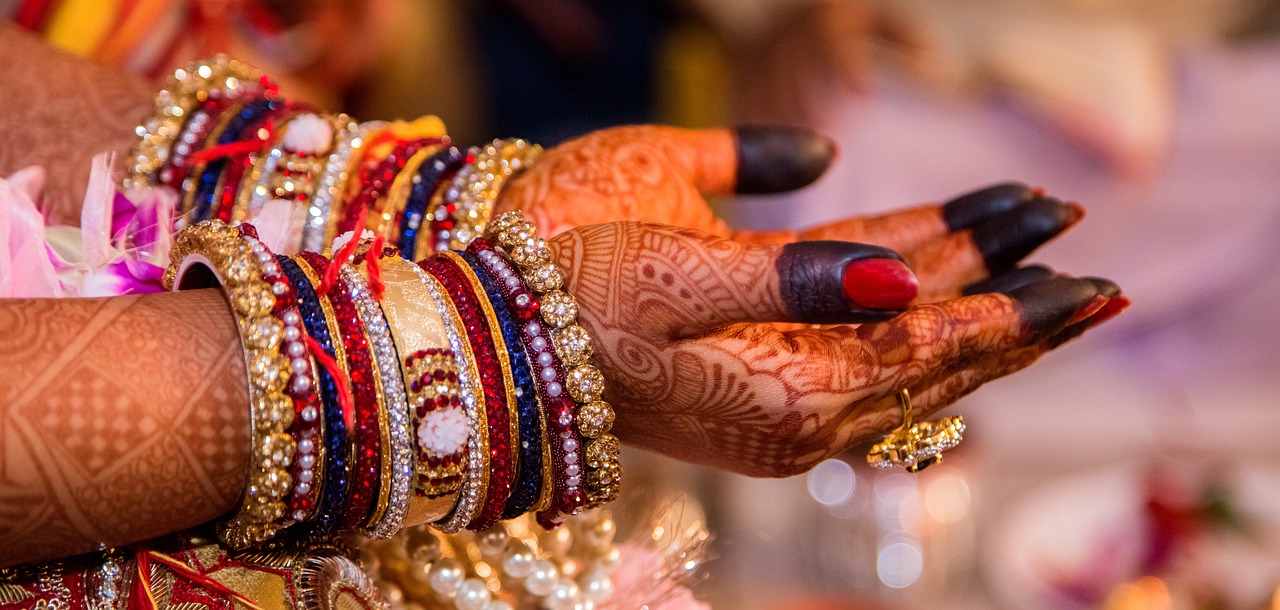
The Middle Ages: Jewelry in a Changing World
The Middle Ages, spanning from the 5th to the late 15th century, marked a significant transformation in the world of jewelry. This era was characterized by profound changes in society, particularly due to the rise of Christianity and the feudal system. These influences reshaped not only the styles of jewelry but also its meanings and functions.
During this period, religious symbolism became a dominant theme in jewelry design. Pieces often featured Christian motifs, such as crosses, chalices, and images of saints. These adornments served a dual purpose: they were not only decorative but also acted as tokens of faith, providing spiritual protection to the wearer. Such jewelry was commonly worn by clergy and the nobility, who sought to express their devotion and status through these sacred symbols.
Furthermore, the feudal system played a crucial role in determining the jewelry styles of the time. Nobles and royalty adorned themselves with elaborate pieces, which were often made from precious metals and adorned with gemstones. This jewelry was a clear indicator of one’s social standing, with the intricacy and richness of the designs reflecting the wealth and power of the wearer. The use of gold and silver became prevalent, with artisans employing advanced techniques to create stunning pieces that showcased their craftsmanship.
In addition to religious and status-driven jewelry, the Middle Ages also saw the emergence of functional pieces. Jewelry began to serve practical purposes, such as clasps and brooches, which were essential for fastening garments. This shift illustrated a blend of beauty and utility, as wearers sought pieces that were both aesthetically pleasing and functional.
In conclusion, the Middle Ages represented a pivotal moment in the evolution of jewelry. Influenced by religious beliefs and social structures, the styles and functions of adornments transformed significantly. This period laid the groundwork for future developments in jewelry design, merging artistry with deeper meanings that resonate to this day.
Religious Symbolism in Medieval Jewelry
The Middle Ages marked a significant period in the history of jewelry, where the intertwining of faith and artistry led to the creation of pieces that were not only beautiful but also rich in religious symbolism. The rise of Christianity during this era greatly influenced the designs and meanings behind various jewelry items.
Jewelry served as a devotional object for many individuals, with pieces often adorned with Christian symbols. Among the most prominent were crosses, which represented the sacrifice of Christ and were worn as a sign of faith and protection. These crosses came in various forms, from simple designs to intricate pieces embellished with gemstones that showcased the skill of the artisans.
Moreover, saint medallions became popular, allowing wearers to carry a piece of their faith with them. These medallions often depicted the images of saints, believed to provide divine intercession and guidance. Such pieces were not just personal adornments; they were also meant to invoke a sense of spiritual connection and serve as a reminder of one’s beliefs.
In addition to their spiritual significance, these jewelry items were also status symbols. Nobles and clergy often wore elaborate pieces that reflected their wealth and devotion, showcasing the intricate craftsmanship of the time. The use of precious metals and gemstones in these pieces highlighted the importance of both faith and status in medieval society.
As the Middle Ages progressed, the incorporation of religious themes in jewelry continued to evolve. The combination of artistry and faith led to the creation of unique pieces that remain significant in the history of jewelry design. Today, many of these medieval styles continue to inspire modern jewelry makers, illustrating the lasting impact of religious symbolism in adornment.
Jewelry as Status Symbols
Jewelry has long served as a powerful symbol of status within society, particularly during the medieval period. During this time, the significance of jewelry transcended mere aesthetics, evolving into a representation of wealth, power, and social hierarchy. Nobles and royalty adorned themselves with exquisite pieces, each crafted with meticulous attention to detail and often featuring precious materials such as gold, silver, and gemstones.
In medieval society, the display of jewelry was not just about personal adornment; it was a declaration of one’s place within the social order. The elaborate designs and the quality of materials used in these pieces were indicative of the wearer’s economic status and influence. For instance, a nobleman might wear a gem-encrusted brooch or a richly detailed crown, while commoners were often limited to simpler, less ornate items.
Jewelry also played a significant role in political alliances and marriages, with pieces often exchanged as tokens of loyalty or as part of dowries. These adornments could serve to strengthen ties between families or factions, further emphasizing their importance beyond personal use. Moreover, the types of jewelry worn could signal allegiance to particular factions or religious affiliations, as certain symbols became associated with specific groups.
As such, jewelry in the medieval era became a visual language, communicating messages about identity, power dynamics, and social standing. This practice of using jewelry as a status symbol has persisted throughout history, evolving but remaining a fundamental aspect of human culture. In contemporary society, while the materials and styles may have changed, the underlying principle of jewelry as a marker of status continues to hold true, reflecting the values and aspirations of individuals across different cultures.
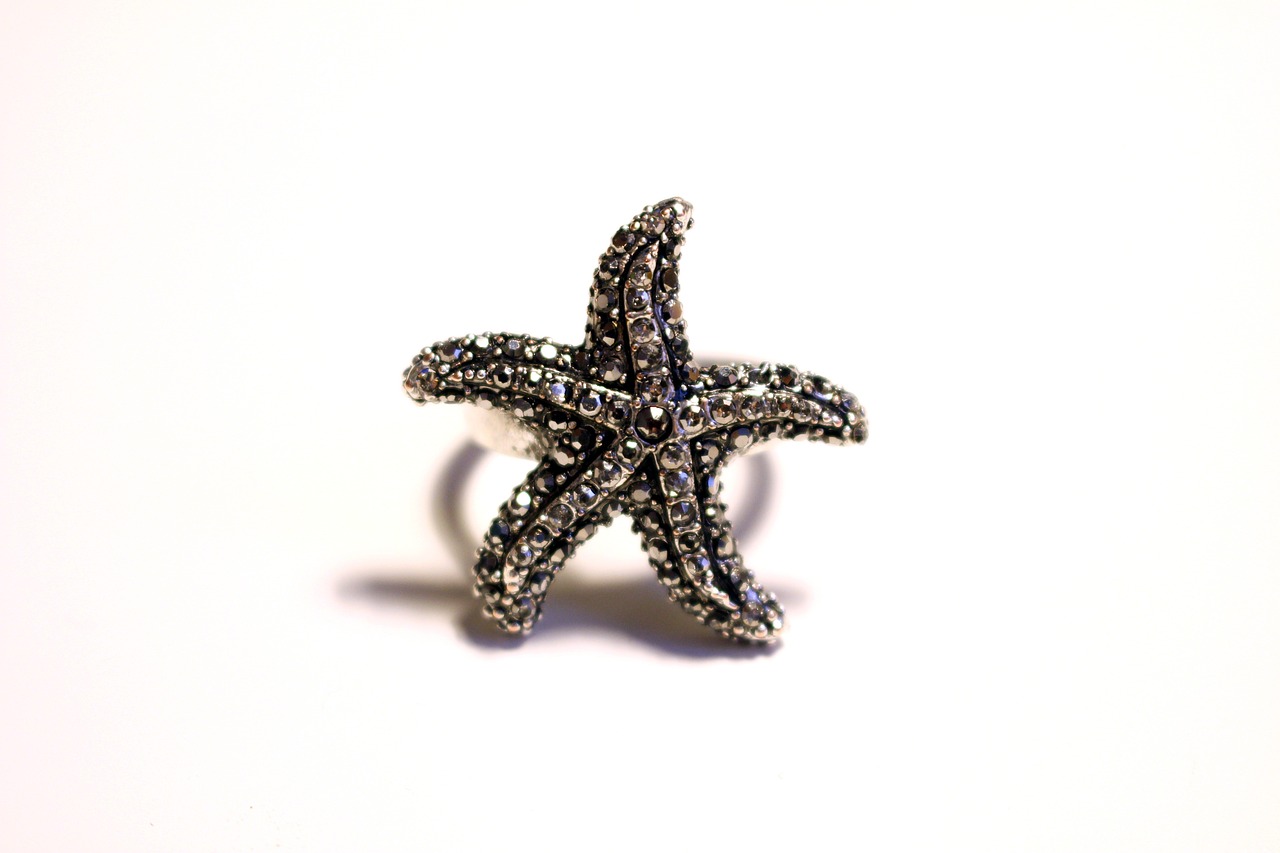
The Renaissance: A Revival of Art and Elegance
The Renaissance period, spanning from the 14th to the 17th century, was a remarkable era that heralded a profound transformation in art, culture, and society. This period is often characterized by a renewed interest in classical antiquity, leading to significant advancements in various fields, including jewelry design.
During the Renaissance, jewelry evolved from simple adornments to exquisite works of art. Artisans began to draw inspiration from classical motifs, incorporating intricate designs that showcased their technical skills and creativity. The newfound emphasis on individual expression and beauty led to the creation of more elaborate pieces, often adorned with precious stones and intricate metalwork.
One of the most notable changes in jewelry design during this era was the introduction of new techniques. Enameling became increasingly popular, allowing jewelers to create vibrant colors and patterns. Additionally, techniques such as engraving and filigree were refined, enabling artisans to produce delicate and detailed pieces that captivated the wealthy elite.
Royalty and the affluent played a crucial role in shaping jewelry trends during the Renaissance. Figures like Queen Elizabeth I became trendsetters, influencing the styles and materials favored by the upper classes. Their demand for luxurious and ornate pieces spurred innovation among jewelers, leading to the creation of unique designs that symbolized status and power.
Jewelry from this period often carried deep symbolism. Pieces were not only decorative but also served as status symbols and expressions of personal beliefs. For instance, many Renaissance jewels featured motifs associated with love, fidelity, and protection, reflecting the values and aspirations of their wearers.
In conclusion, the Renaissance was a pivotal time for jewelry design, marked by a revival of classical influences and an emphasis on artistry. The period’s innovations and the patronage of the wealthy led to the creation of stunning pieces that continue to inspire modern jewelry designers today.
Innovations in Jewelry Design
have played a pivotal role in shaping the aesthetic and functional aspects of adornment throughout history. During the Renaissance, a period marked by a revival of arts and culture, jewelry design underwent a significant transformation. The introduction of new materials and advanced techniques allowed artisans to create pieces that were not only visually stunning but also rich in symbolism and meaning.
One of the most notable advancements was the use of enamel, which enabled jewelers to add vibrant colors and intricate designs to their creations. This technique involved fusing powdered glass to metal surfaces, resulting in a glossy finish that enhanced the overall appeal of the jewelry. The ability to incorporate enamel allowed for more elaborate motifs, often inspired by nature, mythology, and religious themes.
Furthermore, the Renaissance era saw the development of new techniques such as piercing and engraving, which provided artisans with the tools to create more detailed and complex designs. This period also marked the rise of gemstone cutting techniques, allowing for the enhancement of the natural beauty of stones, making them more desirable for use in jewelry. The combination of these innovations resulted in pieces that were not only decorative but also showcased the skill and creativity of the craftsmen.
Additionally, the influence of royalty and the wealthy elite played a significant role in jewelry trends during this time. As these figures adorned themselves with opulent pieces, they set standards that trickled down to the upper classes, inspiring a wave of intricate designs characterized by lavish embellishments and rich materials. This cultural exchange further fueled the evolution of jewelry design, making it a reflection of both personal status and artistic expression.
In conclusion, the innovations in jewelry design during the Renaissance were a testament to the era’s artistic spirit. The introduction of new materials like enamel and advancements in techniques allowed for the creation of intricate and colorful pieces that continue to influence jewelry design to this day.
The Influence of Royalty on Jewelry Trends
The world of jewelry has always been intertwined with the influence of royalty, particularly during significant historical periods. Royal figures have not only adorned themselves with exquisite pieces but have also served as pivotal trendsetters in the jewelry realm. One of the most notable examples is Queen Elizabeth I, whose reign from 1558 to 1603 marked a golden age of English history and culture. Her unique style and opulent jewelry choices set a standard that the wealthy classes sought to emulate.
Queen Elizabeth I was known for her extravagant use of jewels, often wearing intricate pieces that showcased her power and status. The queen favored large, ornate necklaces, elaborate earrings, and rings adorned with precious stones. This opulence was not merely for decoration; it was a statement of her authority and a reflection of the wealth of the crown. The Elizabethan era saw the rise of jewelry that featured pearls, diamonds, and colorful gemstones, each carefully selected for their beauty and symbolism.
As the queen’s fashion choices became widely publicized, they sparked a trend among the aristocracy and wealthy merchants. Many sought to replicate her style, leading to a surge in the demand for similar pieces. This phenomenon can be seen as an early example of fashion influence, where royal preferences dictated what was considered fashionable among the elite. The wealthy classes began to showcase their own collections of jewelry, often competing to display their riches through elaborate designs and precious materials.
Furthermore, the influence of royalty extended beyond mere imitation. Jewelers began to innovate, creating pieces that reflected the grandeur associated with royal patronage. Techniques such as enameling and intricate metalwork were developed to meet the high standards set by royal tastes. As a result, the jewelry of the time became synonymous with sophistication and artistry.
In conclusion, the impact of royal figures like Queen Elizabeth I on jewelry trends is undeniable. Their choices not only shaped the styles of their time but also laid the groundwork for future generations to explore and express their own identities through adornment. The legacy of royal influence continues to resonate in today’s jewelry designs, reminding us of the enduring connection between power, wealth, and the art of adornment.
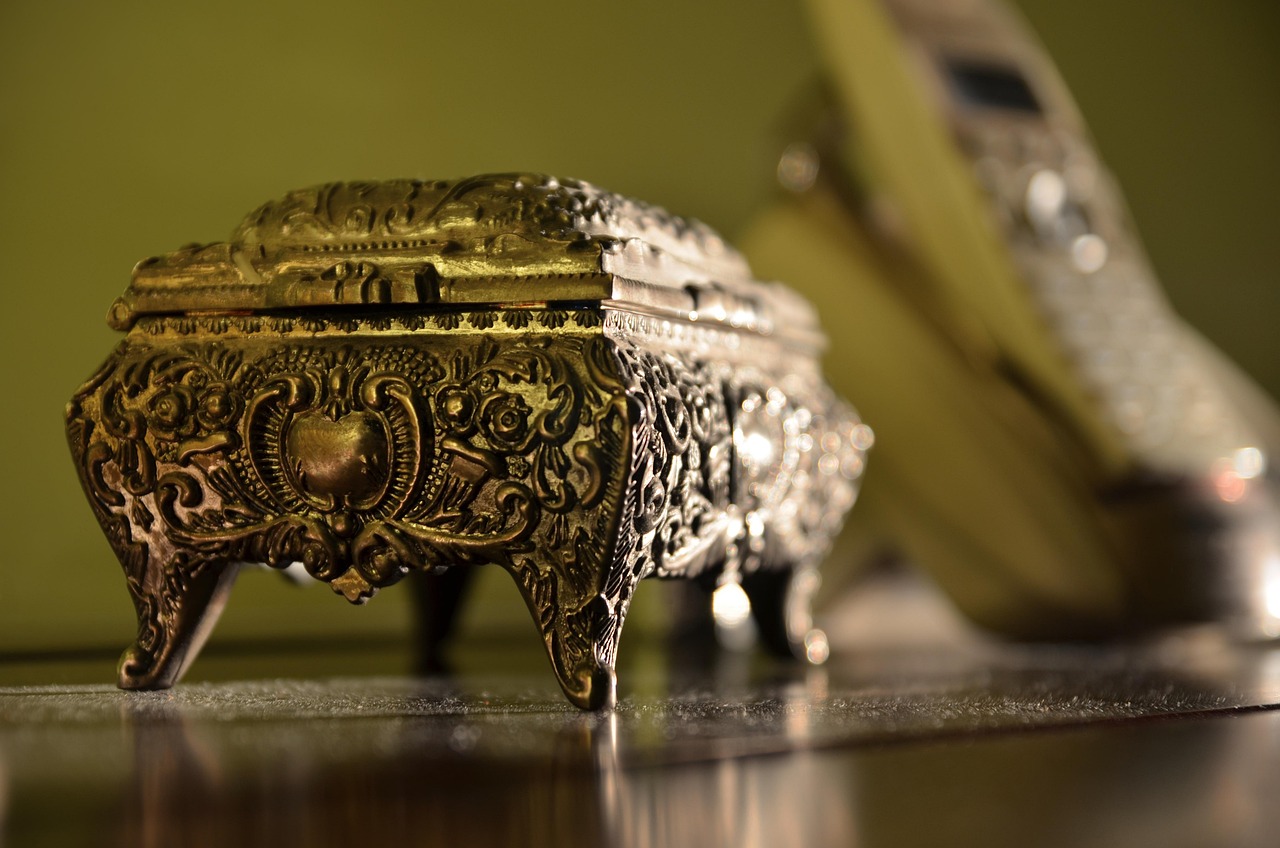
The Industrial Revolution: Mass Production and Accessibility
The Industrial Revolution marked a pivotal turning point in the history of jewelry production, fundamentally altering how adornments were created and consumed. Prior to this era, jewelry was primarily handcrafted, making it a luxury reserved for the wealthy elite. However, the advent of industrialization introduced mass production, enabling jewelry to become more accessible to the general populace.
With the introduction of machinery and innovative techniques, the jewelry-making process evolved significantly. Artisans were able to produce intricate designs at a much faster rate, which not only reduced costs but also increased availability. This shift allowed a wider range of consumers to purchase jewelry, leading to a democratization of adornment. As a result, jewelry that was once a symbol of wealth became a staple of everyday fashion.
Additionally, the Industrial Revolution introduced new materials that changed the landscape of jewelry design. Costume jewelry emerged as a popular alternative to fine jewelry, utilizing materials such as glass, plastic, and base metals to create fashionable pieces that were affordable for the masses. This innovation opened the door for individuals to express their personal style without the financial burden associated with traditional precious metals and gemstones.
Furthermore, the era saw the rise of design innovation. Jewelers began to experiment with new techniques, such as machine engraving and casting methods, which allowed for more elaborate and diverse designs. The combination of new materials and production methods led to an explosion of creativity in jewelry design, reflecting the dynamic cultural shifts of the time.
In conclusion, the Industrial Revolution not only revolutionized the production of jewelry but also transformed its role in society. By making adornments accessible to a broader audience and introducing innovative materials and techniques, it reshaped the way individuals interacted with jewelry, paving the way for the diverse and inclusive jewelry landscape we see today.
Emergence of Costume Jewelry
The Emergence of Costume Jewelry
The advent of costume jewelry marked a significant turning point in the world of adornment, democratizing access to fashion and personal expression. Unlike traditional fine jewelry, which often carries a hefty price tag, costume jewelry emerged as a more affordable alternative, allowing individuals from various backgrounds to engage with the latest trends without breaking the bank.
In the late 19th and early 20th centuries, the rise of mass production techniques played a crucial role in the popularity of costume jewelry. This era saw the introduction of new materials, such as faux pearls, glass beads, and base metals, which enabled manufacturers to create stunning pieces that mimicked the appearance of fine jewelry. As a result, the market was flooded with a variety of stylish options that appealed to a broader audience.
- Accessibility: Costume jewelry made it possible for individuals to accessorize and express their personal style without the financial burden of expensive pieces.
- Variety: With the ability to produce jewelry in large quantities, designers could offer a diverse range of styles, colors, and designs, catering to different tastes and preferences.
- Fashion Trends: Costume jewelry allowed wearers to easily update their accessories in line with changing fashion trends, promoting a culture of experimentation and self-expression.
Furthermore, the influence of Hollywood and popular culture cannot be overstated. Celebrities and fashion icons began to embrace costume jewelry, showcasing bold and extravagant pieces that captured the public’s imagination. This visibility helped to elevate costume jewelry to a status of its own, making it a staple in many wardrobes.
In conclusion, the emergence of costume jewelry has not only transformed the way people adorn themselves but has also played a pivotal role in shaping fashion accessibility. By providing an avenue for self-expression that transcends economic barriers, costume jewelry continues to hold a significant place in the hearts of fashion enthusiasts around the world.
Technological Advancements in Jewelry Making
have significantly transformed the landscape of the jewelry industry, bringing forth a new era of creativity and accessibility. The integration of machinery and innovative materials has not only expedited the production process but also enhanced the intricacy of designs, allowing artisans to explore previously unimaginable concepts.
Historically, jewelry making was a labor-intensive craft, often relying on hand tools and traditional techniques. However, with the advent of the Industrial Revolution, the introduction of machinery revolutionized the way jewelry was produced. This shift enabled manufacturers to create intricate designs at a much faster rate and reduced production costs, making jewelry more accessible to a broader audience.
In addition to machinery, the exploration of new materials has played a crucial role in the evolution of jewelry design. Alternative materials, such as synthetic gemstones and innovative alloys, have emerged, allowing for greater experimentation in style and affordability. This has led to the rise of costume jewelry, which offers fashionable options at lower prices, appealing to a wider demographic.
Furthermore, advancements in technology, such as 3D printing, have opened new avenues for creativity. Designers can now produce complex shapes and patterns that were once impossible to achieve with traditional methods. This technology not only allows for customization but also reduces waste, aligning with the growing demand for sustainable practices in the industry.
Moreover, the digital age has facilitated the rise of online platforms, enabling designers and brands to reach global audiences. This accessibility has fostered a diverse marketplace where consumers can find unique pieces that resonate with their personal style.
In conclusion, the have not only transformed production methods but have also redefined the relationship between consumers and jewelry. As the industry continues to evolve, it is poised to embrace even more innovations, ensuring that the art of adornment remains vibrant and relevant in the modern world.

Modern Jewelry: Trends and Sustainability
In today’s world, the jewelry industry has undergone a remarkable transformation, blending the rich heritage of traditional craftsmanship with the innovative flair of modern design. This evolution is not just about aesthetics; it is also deeply intertwined with the growing demand for sustainability and ethical practices in sourcing materials.
The modern jewelry landscape is characterized by a diverse range of styles that reflect individual expression and cultural influences. Consumers are increasingly gravitating towards pieces that are not only beautiful but also meaningful. This shift has led to the rise of customized jewelry, where artisans create unique pieces tailored to the personal stories and preferences of their clients.
Moreover, the focus on sustainability has prompted many brands to reevaluate their practices. This includes the use of recycled metals, ethically sourced gemstones, and environmentally friendly packaging. As awareness of environmental issues grows, consumers are more inclined to support brands that prioritize eco-conscious practices. According to recent studies, a significant percentage of consumers are willing to pay a premium for jewelry that is sustainably produced.
Additionally, the incorporation of modern technology has revolutionized the way jewelry is designed and produced. Techniques such as 3D printing allow for intricate designs that were once thought impossible, enabling artisans to push the boundaries of creativity while minimizing waste. This technological advancement not only enhances design capabilities but also aligns with sustainable practices by reducing the need for excess materials.
In conclusion, the modern jewelry scene is a vibrant tapestry woven from threads of tradition, innovation, and a commitment to sustainability. As the industry continues to evolve, it is clear that the future of jewelry lies in a harmonious blend of artistry and responsibility, catering to the values of today’s conscientious consumers.
Contemporary Design Trends
In the ever-evolving world of jewelry design, current trends are significantly shaped by minimalism, personalization, and the exploration of unconventional materials. These elements not only reflect contemporary aesthetics but also resonate deeply with individual expression.
- Minimalism: The minimalist approach emphasizes simplicity and elegance. Jewelry pieces are often designed with clean lines and understated forms, allowing the beauty of the materials to shine through. This trend appeals to those who prefer a subtle yet sophisticated style.
- Personalization: Customization has become a key aspect of modern jewelry. Consumers are increasingly seeking pieces that tell their unique stories. This can include engraved names, birthstones, or designs that reflect personal milestones. Such personalized adornments serve not only as fashion statements but also as cherished keepsakes.
- Unconventional Materials: Designers are stepping away from traditional materials like gold and diamonds, opting instead for innovative alternatives. Materials such as resin, wood, and even recycled metals are gaining popularity. This shift not only promotes creativity but also aligns with a growing consciousness about sustainability and ethical sourcing.
The integration of these trends signifies a broader movement towards individuality in jewelry design. As consumers become more discerning, they gravitate towards pieces that resonate with their personal values and aesthetic preferences. This evolution in design not only reflects current societal shifts but also paves the way for future innovations in the jewelry industry.
In conclusion, the contemporary jewelry landscape is a vibrant tapestry of minimalist designs, personalized creations, and the bold use of unconventional materials. This dynamic environment encourages both designers and consumers to explore new realms of expression, ensuring that jewelry remains a significant form of art and identity in our lives.
The Shift Towards Sustainable Practices
As the global consciousness shifts towards environmental stewardship, the jewelry industry is experiencing a significant transformation. Consumers are increasingly demanding sustainability, prompting brands to rethink their practices. This shift is not merely a trend; it reflects a deeper understanding of the impact that jewelry production has on the planet.
One of the primary focuses of this movement is ethical sourcing. Companies are now prioritizing materials that are obtained responsibly. This includes using recycled metals, which significantly reduces the need for new mining operations that can be harmful to the environment. Additionally, many brands are seeking out gemstones that are sourced from mines that adhere to strict environmental and labor standards, ensuring that the workers involved are treated fairly.
Another crucial aspect of sustainable jewelry is the use of eco-friendly materials. Designers are exploring alternatives such as lab-grown diamonds and sustainable gemstones, which offer consumers a guilt-free option without compromising on quality or beauty. These materials not only minimize the environmental footprint but also often come with a lower price tag, making them more accessible to a broader audience.
Moreover, the rise of transparency in the supply chain has become a significant demand from consumers. Brands are now expected to provide clear information about where and how their materials are sourced. This transparency builds trust and allows consumers to make informed choices about their purchases.
In conclusion, the jewelry industry is adapting to a new era where sustainability is at the forefront. As consumers continue to prioritize ethical practices, brands that embrace these changes are likely to thrive. The shift towards sustainable practices is not just a response to market demands; it represents a commitment to a more responsible and conscious approach to jewelry making.
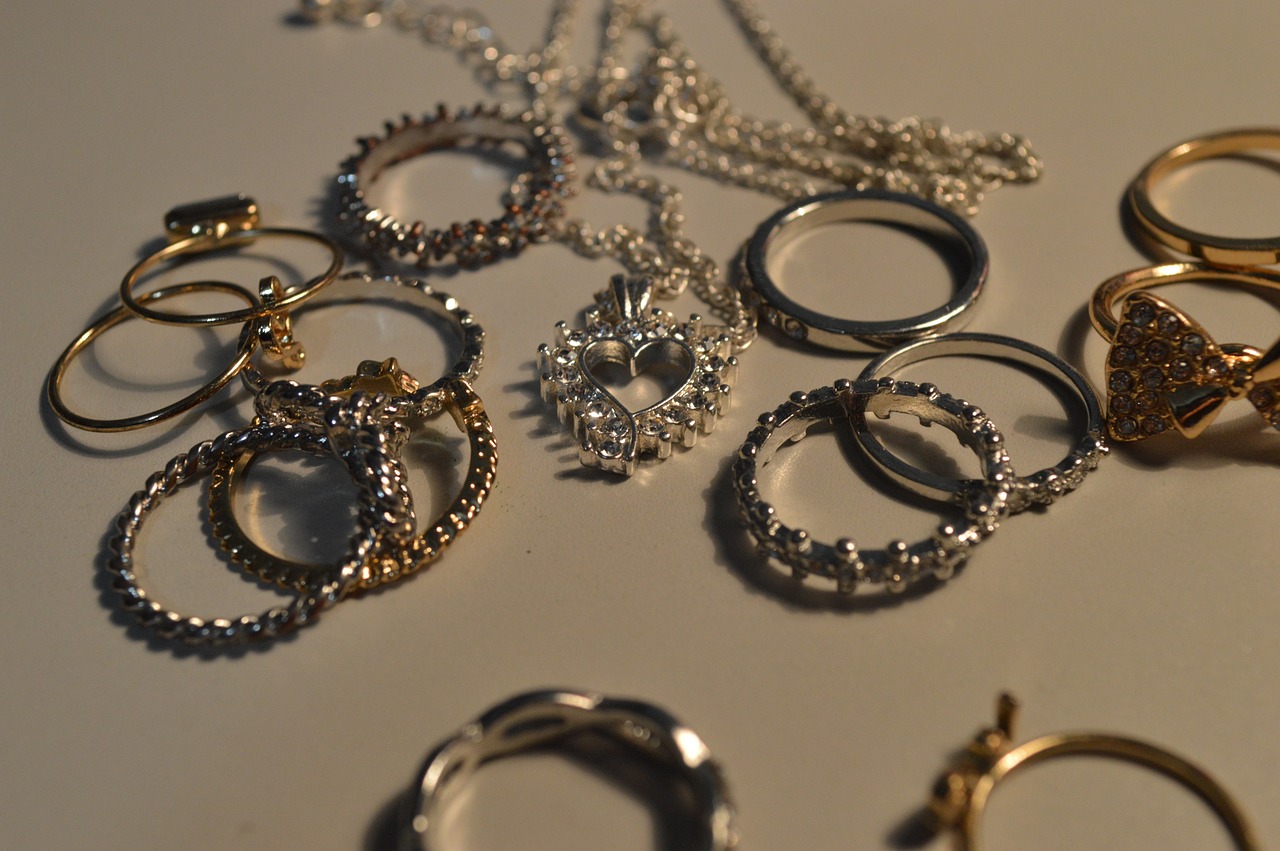
The Future of Jewelry: Innovations and Predictions
As we look toward the future, the jewelry industry is on the brink of a significant transformation. The integration of technological innovations is poised to redefine not only how jewelry is made but also how it is perceived and worn by individuals. Two key advancements, 3D printing and smart jewelry, are at the forefront of this evolution.
3D Printing: Revolutionizing Jewelry Design
3D printing technology allows for unprecedented creativity in jewelry design. Artisans can create intricate and personalized pieces that were previously impossible to achieve with traditional methods. This technology enables designers to produce customized jewelry at a fraction of the time and cost, making unique pieces accessible to a broader audience. Additionally, 3D printing reduces material waste, aligning with the growing demand for sustainable practices in the industry.
Smart Jewelry: The Intersection of Fashion and Technology
Smart jewelry, incorporating technology into wearable adornments, is another trend set to reshape the future. These pieces can track health metrics, connect to smartphones, and even offer notifications, merging functionality with style. As consumers become more tech-savvy, the demand for smart jewelry is expected to rise, providing brands with new opportunities to innovate and engage with their audience.
Personalization and Consumer Engagement
- With advancements in technology, consumers are increasingly seeking personalized experiences. Brands that offer customization options will likely thrive in this new landscape.
- Social media platforms and online marketplaces are also changing how jewelry is marketed and sold, allowing for direct engagement with consumers.
Conclusion
The future of jewelry is undoubtedly exciting, with innovations such as 3D printing and smart jewelry paving the way for a more personalized and sustainable industry. As technology continues to evolve, so too will our relationship with jewelry, transforming it from mere adornment into a reflection of our identities and lifestyles.
Frequently Asked Questions
- What materials were commonly used in ancient jewelry?
Ancient jewelry was primarily made from gold, silver, and various gemstones. Each material was chosen not only for its beauty but also for its cultural significance and symbolism, reflecting the values of the society that crafted it.
- How did jewelry evolve during the Middle Ages?
During the Middle Ages, jewelry styles shifted significantly due to the rise of Christianity and feudalism. This period saw the incorporation of religious symbols and a clearer distinction in social status, with nobles showcasing their wealth through elaborate pieces.
- What impact did the Renaissance have on jewelry design?
The Renaissance was a time of artistic revival, leading to more elaborate and expressive jewelry designs. Innovations in techniques and the introduction of new materials like enamel allowed artisans to create stunning pieces that reflected the era’s artistic spirit.
- What changes did the Industrial Revolution bring to jewelry production?
The Industrial Revolution transformed jewelry making by introducing mass production techniques. This made jewelry more accessible to the masses and led to the emergence of costume jewelry, allowing everyone to participate in fashion trends.
- How is modern jewelry focusing on sustainability?
Today, there is a growing emphasis on sustainability in the jewelry industry. Many brands are adopting ethical sourcing practices and using eco-friendly materials to meet the demands of environmentally conscious consumers.
- What does the future hold for jewelry design?
The future of jewelry is likely to be shaped by technological innovations such as 3D printing and smart jewelry. These advancements could redefine our perceptions and uses of adornments, making them more personalized and functional.

